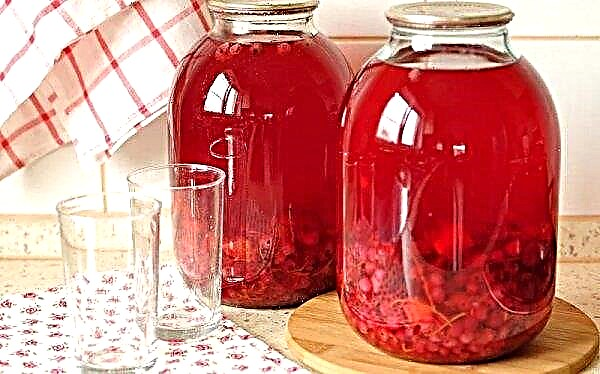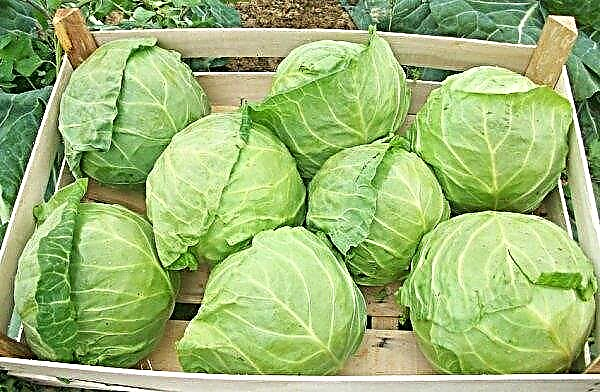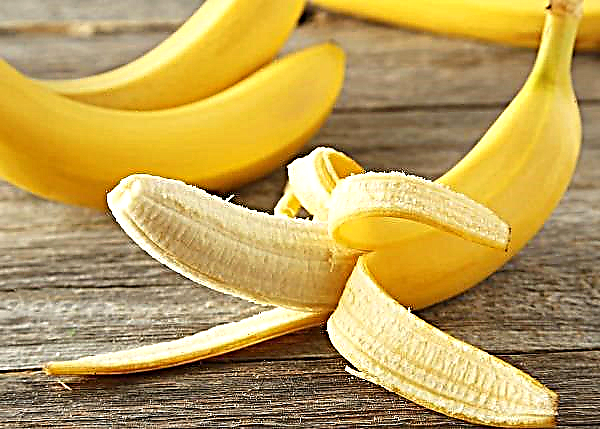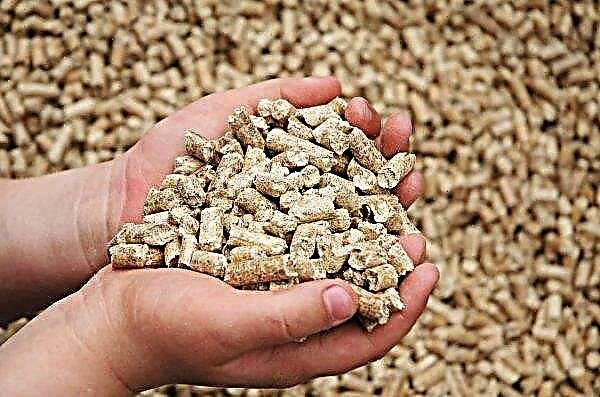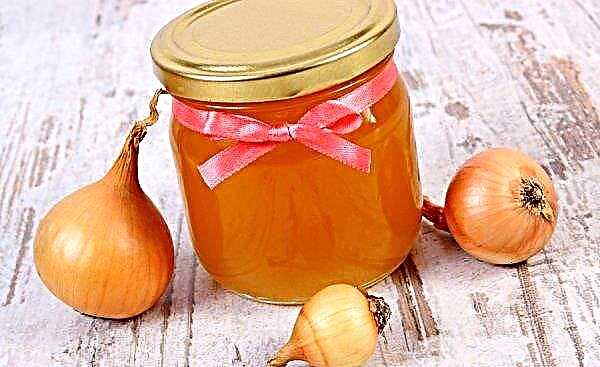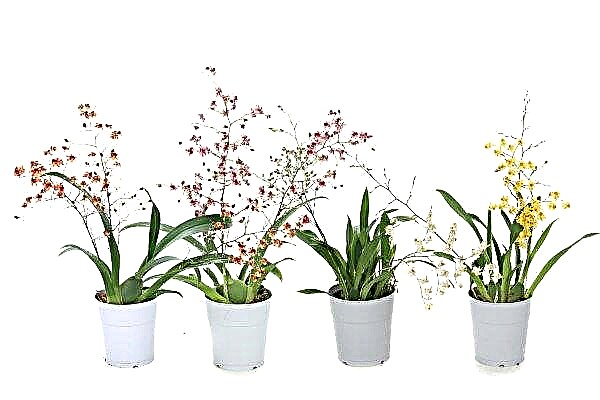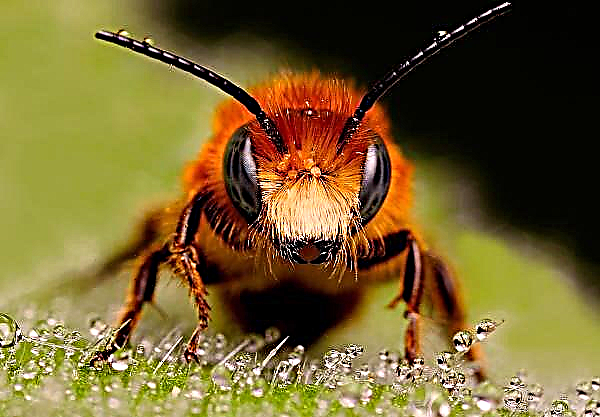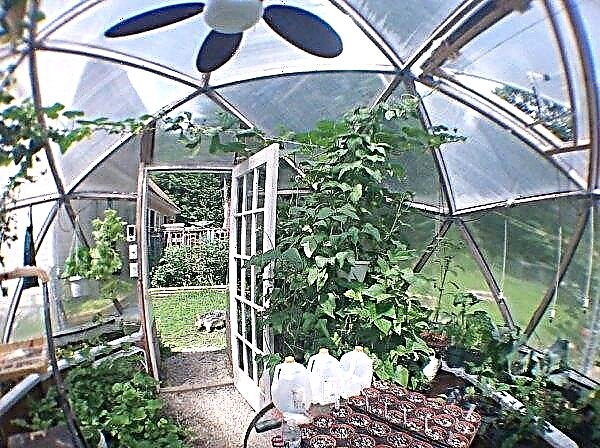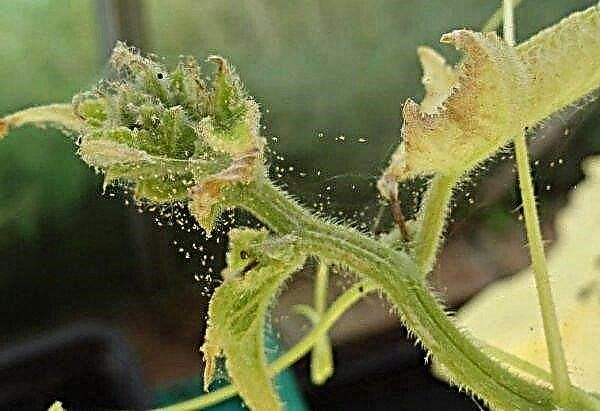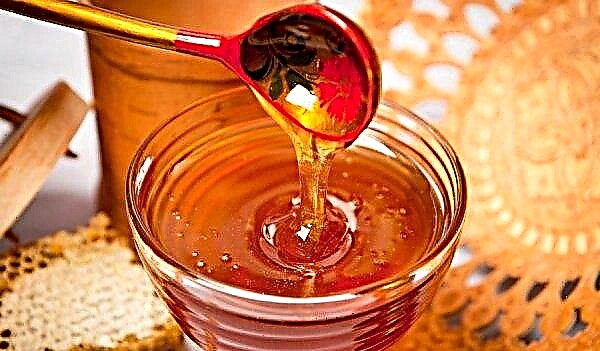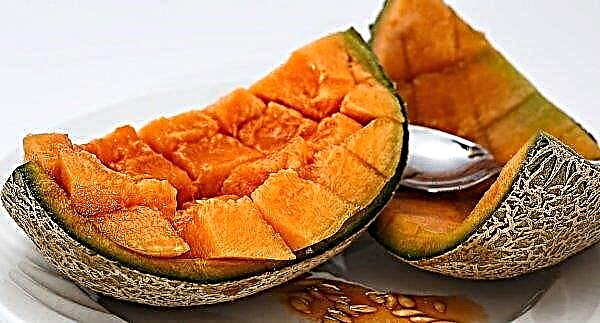Varieties of cabbage broccoli are classified by maturity and combine them into three large groups. The most popular high-yielding varieties of broccoli will be discussed below.
The best varieties for open ground
Types of cabbage are selected for a specific site and climatic zone, based on the timing of the fruits reaching technical maturity in order to extract the maximum benefit from the cultivation of plants. Early varieties and mid-season are more suitable for Siberia and the middle lane; later varieties in such a climate simply will not have time to reach the necessary maturity in a short summer.
Did you know? Broccoli has the ability to break down and excrete atherogenic fats, which are the main component of cholesterol.
For the southern regions, early and late ripening varieties intended for long-term storage are suitable. This is due to the high cold resistance of most crops. They are able to tolerate lowering temperatures to -7 ° C.
In addition to the maturity, broccoli are divided into two species groups that differ in appearance:
- Calabrese - The head of cabbage has a dense structure and consists of closely located inflorescences that form on a thick stem. In such plants, the entire terrestrial part is suitable for food.
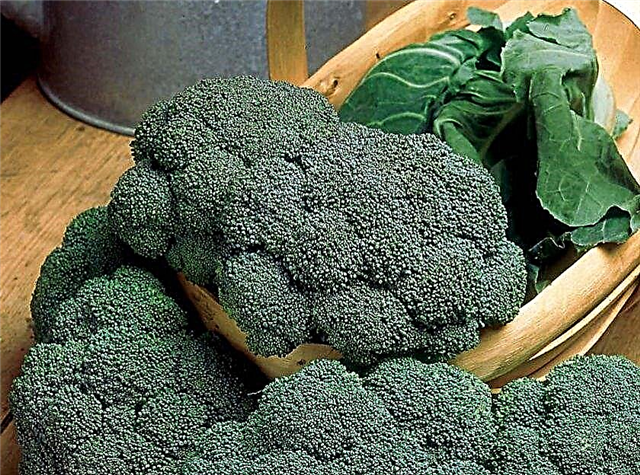
- Asparagus - plants form many stems on which small heads are held. Suitable for food stems, reminiscent of the taste of asparagus.

Broccoli seeds can be varietal and hybrid. The former are suitable for reproduction at home and fully retain maternal properties for several generations. Varietal plants mature longer, but are characterized by higher palatability. Hybrids are not able to maintain maternal properties in the second generation, therefore, seed should be purchased annually. Their taste is lower than that of varietal, but they mature faster and are more resistant to the negative effects of the environment.
Did you know? The homeland of broccoli is Italy, where it was bred from wild cabbage eight centuries ago.
Early ripe varieties
Rating of the most prolific early specimens of broccoli:
- Batavia - a hybrid ripening in 60–65 days from the moment of spike diving into the ground. The leaf socket is raised. Medium-sized leaves are painted in a grayish-green color, have a bubbly structure, and are very wavy at the edges. The heads are dense, fines. The variety is resistant to fusarium wilt. Productivity - 2 kg / m².
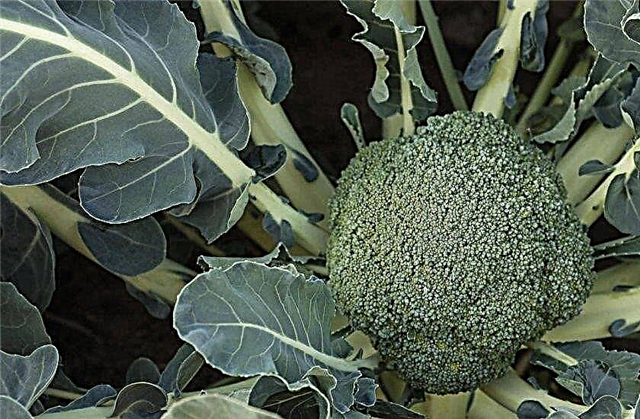
- Lord f1 - a hybrid variety that ripens in 55-60 days. The central powerful head weighs 1.5 kg. After pruning, the plant forms secondary heads weighing 200 g. The variety is tolerant to the formation of voids in the stem, resistant to powdery mildew. Productivity - 3-4 kg / m².

- Tone - A variety that ripens in 60–90 days depending on the quality of care and climate. Dark green heads consist of medium density inflorescences. The variety, with proper care, bears fruit until October. It is characterized by high palatability, but prone to flowering. Productivity - 2 kg / m².

- Green Magic F1 - The hybrid ripens in 60–65 days. A single-stem plant does not form covering leaves. The heads are dense rounded, dark green in color, weighing 300–700 g. The hybrid is resistant to fungal diseases and the hollow of the stem. Productivity - 2 kg / m².

- Early purple - a variety that evolved from wild cabbage of the Mediterranean. Ripens in 60–90 days depending on climatic conditions. Fruits to frost. Plants are highly cold resistant. Productivity - 4 kg / m².

Mid-season varieties
The most productive mid-season varieties of broccoli:
- Marathon - cold-resistant hybrid, poorly tolerating heat. Matures in 80–85 days. The central head is large, medium-dense, blue-green, weighing up to 800 g. It is held on a thickened stalk, almost white. Productivity - 3.2 kg / m².

- Fiesta F1 - a hybrid that ripens for about 90 days. Suitable for summer (in open ground) and autumn (in greenhouses) cultivation. The leaves of blue-green color have an oblong shape and a strongly bubbly structure. The main difference between this type of broccoli is the lack of side shoots. The head is large and very dense, dark green with a bluish tint. Productivity - 3.5 kg / m².
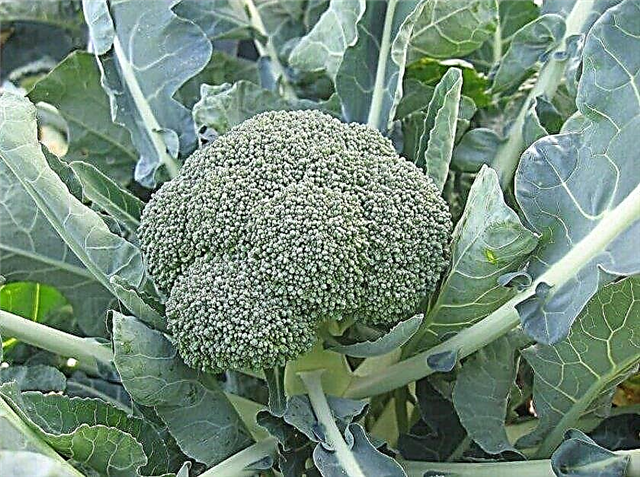
- Lucky F1 - The hybrid ripens in 70 days. Plants form a powerful dense head of dark green color with a dense structure. The weight of the main head reaches 900 g. From 1 m², you can collect up to 3 kg of high-quality fruits. The variety is resistant to oidium.

- Ironman - The hybrid ripens in 80 days. A central head is formed on the thickened stem, and additional ones are located next to it. The weight of the central one is up to 500 g, additional 200-300 g. From 1 m², you can get 3 kg of high-quality products.

- Macho F1 - The hybrid ripens in 78–82 days. The stem forms blue-green elongated, dissected leaves. The heads are of dense structure, flat-rounded. Most of the head is hidden by covering leaves. Productivity - 3 kg / m².

- Bathory - a hybrid that ripens in 75–80 days. The plant forms several compact heavy heads with a dense structure. The variety proved to be good at thickening of stands in the field. Productivity from 1 m² can be up to 8 kg.
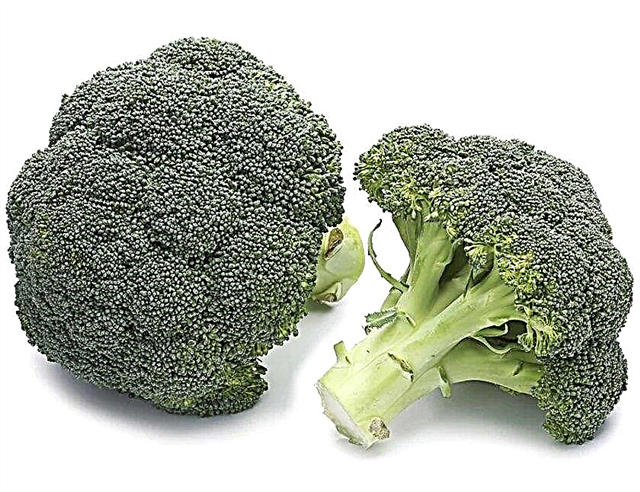
Late ripening varieties
The best late ripe representatives:
- Agassi F1 - a thermophilic hybrid species that ripens in 130–145 days. It forms tight heads weighing 700 g. From 1 m², about 3.5 kg are obtained. The main advantage of this species is the long shelf life of the crop - up to 5 months.

- Partenon - A hybrid variety that ripens in 140 days. Plants form large, dense heads weighing 900 g each. It gives a good harvest not only in open ground, but also in greenhouses. From 1 m² you can get up to 3.5 kg of quality products.

Growing Features
Seedlings of Elkom company and Dutch companies proved to be quite good. Regardless of the ripening time, broccoli is best propagated by seedlings. From the time of sowing to obtain high-quality seedlings, it takes about 40 days.
Sowing dates for different types:
- early - from March 1 to March 15 for the southern regions and from the end of March for the northern and central bands;
- mid-season - from April 1 to April 15;
- later - in March.
Important! When harvesting, no more than 3 heads can be cut at a time. Otherwise, the plant will lose too much juice and will not be able to continue fruiting.
Broccoli is demanding about the presence of lighting, so it needs an open area, well-lit from all sides. Plants develop well on soils richly fertilized with humus. Crops are highly susceptible to soil acidity. For their full development, the pH level should be neutral - 6, maximum 7. The soil begins to be prepared in the fall, abundantly fertilizing it with manure mixed 1: 1 with sand. To improve aeration, the soil must be dug several times to the depth of the shovel bayonet. For seedlings, seed is sown in containers with a height of 25 cm. When germinating seeds, the temperature is maintained at + 20 ° С. With the advent of sprouts, it is reduced to +9 ... + 11 ° C at a humidity of 80%. Dive into separate containers is carried out after 14 days from the moment of emergence of seedlings. Outdoor transplantation is carried out in the middle, at the end of May or in April - for the southern regions. The optimal landing pattern for any species is 30 × 55 cm.
For seedlings, seed is sown in containers with a height of 25 cm. When germinating seeds, the temperature is maintained at + 20 ° С. With the advent of sprouts, it is reduced to +9 ... + 11 ° C at a humidity of 80%. Dive into separate containers is carried out after 14 days from the moment of emergence of seedlings. Outdoor transplantation is carried out in the middle, at the end of May or in April - for the southern regions. The optimal landing pattern for any species is 30 × 55 cm.
On hot days, it is necessary to maintain high humidity around the plants. In such cases, an automatic irrigation system would be appropriate. Fertilizers for plants use mineral and organic, alternating them. After each moistening of the soil, loosening is necessary.
In general, the process of growing broccoli, regardless of the maturity, is not overly complicated. In the southern latitudes, the ripening of the first edible fruits is faster. The main thing in this case is to trim the heads in a timely manner to allow the plants to form new ones.
Useful Tips
Early ripe specimens are used only for processing and fresh consumption. They are not subject to long-term storage, a maximum of 7 days in the refrigerator.
But they are great for cooking:
- first courses;
- side dishes;
- winter blanks;
- salads.

Mid-season specimens are also not subject to long-term storage. At a temperature within + 6 ° C, the shelf life is a maximum of 15 days. In terms of the use of medium-term broccoli, it is universal. Suitable for fresh processing and consumption.
Later varieties have a long shelf life of 4-6 months. They are used fresh and for the preparation of salads, side dishes, independent dishes. Suitable for commercial activities.
Important! Fresh broccoli is contraindicated for people suffering from gastrointestinal diseases, accompanied by high acidity. Also, do not lean too much on it for people who have a history of gout, due to the content of purine acids.
Any kind of broccoli goes well with various foods. Best of all, the vegetable retains its beneficial qualities when steaming or grilling. Cooking almost completely destroys all the nutrients in this vegetable. Broccoli is a completely undemanding vegetable. It develops well at low temperatures. The main criterion for choosing a variety for a particular site is the fruit ripening time.
















